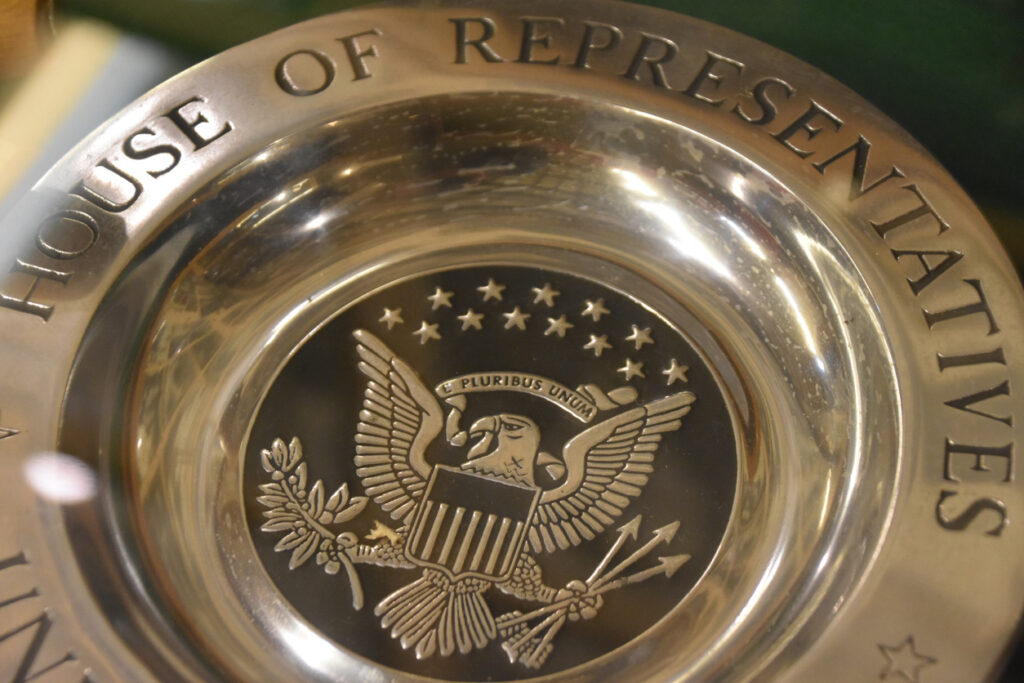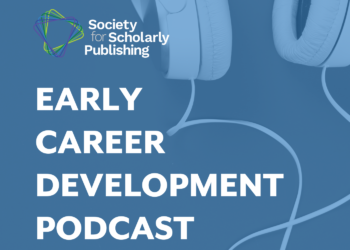Editor’s Note: Today’s post is by Tom Ciavarella. Tom is the head of Public Affairs and Advocacy in North America for Frontiers and runs Smarter Learning, a consultancy that works with startups and STM publishers.
So, you’ve decided to run for public office. You’re smart and charismatic. You possess a great work ethic. You have prominent donors and supporters in your corner and no skeletons in your closet.
But your opponent already holds the job you want. Your opponent is the incumbent, and the one already in the seat almost always has the advantage.
In scholarly publishing, the incumbents are subscription-based publishers. And the benefits of incumbency are clear. The worldwide scientific publishing market for journals is around US$ 27 billion. The five largest paywall publishing houses (Elsevier, Wiley, Springer Nature, Taylor & Francis, and SAGE) have captured more than half of it.
That striking commercial success raises questions of consumer benefit, social value, and public sector intervention. Are we seeing enough competition to spur the innovation we need, at the pace required, to make rigorous science accessible to all? Almost certainly not. The stakes are high enough to justify public policy intervention.

Given that, the White House Office of Science and Technology Policy’s (OSTP) August 2022 guidance was one such intervention that is entirely justified. The goal of making federally funded research freely available without delay (aka the Nelson Memo), is bold. At Frontiers we expressed our support for it at the time – and the White House amplified our support alongside others’.
It was also clear the Biden Administration placed fairness at the heart of the Memo. Individual Americans, via taxes, pay for billions of dollars of scientific research every year. But two-thirds of its results are locked behind publishing paywalls. Science for the few who can access it – as opposed to the many who pay for it – is insufficient as scientific or governmental policy.
But now the Nelson Memo is contested. Alongside many other initiatives from this Administration, support for it is being swept up by a febrile political setting on Capitol Hill. The shape and pace of the Memo’s delivery won’t be clear for some time. And the definition of success still appears to be up for grabs.
Which leads me back to the incumbents of the scholarly publishing world. Will they stand up for the Memo and fight for its funding? It is vital they do. Early signs of the Memo’s neglect – and perhaps forsaking – have been on display in recent weeks. Let me pick three examples.
First, on June 30, the National Institute of Standards and Technology (NIST) released an updated public access plan and a request for comment. That’s no surprise on its own; the NIH, NASA, and other federal agencies have issued similar calls to align themselves with the Nelson Memo.
But NIST’s plan is the first released to posit that the existing 12-month embargo – which the Nelson Memo explicitly sets aside – might still be allowed for some federally funded research articles. (This is noted in line 114 of the NIST RFI.) Such deviations from the Memo’s principles risk undermining the goal of widespread public access.
Then, on July 14, the Appropriations Committee of the US House of Representatives released the Fiscal Year 2024 bill for the Commerce, Justice, Science, and Related Agencies Subcommittee. Section 552 of the bill, if passed into law, would effectively freeze the Nelson Memo for a year (specifically, through the fiscal year ending Sept 30, 2024):
SEC. 552. None of the funds made available by this or any other Act may be used to implement, administer, apply, enforce, or carry out the Office of Science and Technology Policy’s August 25, 2022, Memorandum to Executive Departments and Agencies entitled, ‘‘Ensuring Free, Immediate, and Equitable Access to Federally Funded Research.’’
This development is concerning and would hold back vital progress if enacted.
And finally, this month, the president of research at a one of the world’s largest publishers asserted in an editorial that transformative agreements from legacy publishers are the key to opening access to scientific knowledge. Transformative agreements are a market mechanism, a solution to a financial problem rather than the scientific and technical ones the Nelson Memo was written to address.
To restate the question: will influential incumbents now fight for the Nelson Memo and its funding? Or will they see a chance to put it on ice or water it down, as they may have when the principles of Plan S in the UK and Europe were successfully (if controversially) implemented?
Because of course, the Nelson Memo is now politically charged. Congress has held no public hearings on the OSTP guidelines. No publisher has gone on record opposing the principles underpinning the Nelson Memo. And representatives of both STM and AAP have said that their organizations did not advocate for the language in the House Appropriations bill. But Republicans and Democrats will, among other things, point to the Memo’s funding or defunding as badges of honor.
So, what happens next?
Regarding the House Appropriations bill, it’s worth noting that Section 552 has passed only the House subcommittee so far. For it to become law, the bill would need to clear the full Appropriations Committee and the House floor. Then the Democratic-controlled Senate would have to accept it and President Biden sign it into law. None of this is likely, but the mere presence of Section 552 points to a long fight ahead.
And as for the incongruous NIST position, the agency is likely to receive a torrent of comments from publishers refuting NIST’s interpretation of the Nelson Memo and seeking additional justification for their policy. (Comments on the NIST RFI are due no later than Aug 14.)
As a path to the Nelson Memo’s implementation becomes clearer, and delivery models emerge, decisionmakers should build awareness of, and trust in, the public policy process. And publishers of all stripes should take greater responsibility by advocating for positive change. We need to challenge a fuller range of views in the competition for ideas.
At Frontiers, we have consistently advocated the benefits of greater competition – a wider range of fully open access publishing models – to release our collective scientific knowledge from paywalls. We welcome all such open access models, whether they are publicly or privately funded and financed.
And we will continue to speak openly and publicly on behalf of an established ecosystem of publishers, societies, and scholarly organizations – who together are investing significantly in technology and editorially to see that Open Science remains efficient, trustworthy, and beneficial to all. That’s our social purpose as a business.
A fuller, more public discussion of the Nelson Memo would deepen and broaden perceptions of scientific research and the decisions that flow from it. All publishers – incumbent and new – should contribute to that discussion.
If we believe that facing down global existential threats rests heavily on full and immediate access to the latest scientific knowledge; and if we believe that fully Open Science can help meet the public’s appetite for accountability and trust – then it is vital we defend competition in a diverse publishing landscape.
Discussion
16 Thoughts on "Guest Post — The Nelson Memo and Public Access are Under Attack – Will Powerful Incumbents Come to its Rescue?"
When the first two facts in the first three paragraphs are simply wrong, it’s difficult to take the rest of the article seriously:
1. “The worldwide scientific publishing market for journals is around US$ 27 billion.” That figure includes journals, books, technical information and standards, databases and tools, and medical communications and some related areas. On page five of the document provided in the link, the journal market is clearly shown as $9.5bn in 2020.
2. “The five largest paywall publishing houses (Elsevier, Wiley, Springer Nature, Taylor & Francis, and SAGE) have captured more than half of it.” The link provided does not provide that data at all. What it says is: “In the top 10, half of the listed companies in 2020 focus on scientific or professional publishing (RELX, Thomson Reuters, Wolters Kluwer, Springer Nature, and Wiley)”. The figures for RELX, for example, include legal publishing and other non-science revenues. In fact, the top four science, technical and medical journal publishers have about 40% share of the journal market and adding the fifth does make the number much higher: https://www.elsevier.com/__data/assets/pdf_file/0010/616474/Journal-and-article-ecosystem.pdf
This is sloppy stuff…
Worth noting that these issues were pointed out to the author in the editing process. Also worth noting that the author’s employer is the 6th largest publisher in the market by volume, larger than one of the companies called out for controlling too much of the market and not very far behind one of the others.
Disappointing. I suppose we must accept that we live in a post-factual world.
(Replying to Paul Abraham’s last comment, post truth)
Paul, just to come back on this:
I included in the submitted piece (and I fully understand that posting didn’t allow for all footnotes to be included) the reference on market size as STM’s latest annual report that takes Outsell’s estimate of around $26.5 billion in 2020 (with a forecast of $28 billion this year). See page 4 here:
https://www.stm-assoc.org/wp-content/uploads/2021_10_19_STM_Global_Brief_2021_Economics_and_Market_Size-1.pdf
On the top five publishers, I included the wrong footnote and in doing should have listed top five publishers by articles.
That data, from Dimensions, shows published articles for 2022 as:
Elsevier – 754,484 (18.4%)
Springer Nature – 398,289 (9.8%)
MDPI – 298,582 (7.4%)
Wiley – 231,055 (5.7%)
Taylor & Francis (not Sage as stated) – 141,320 (3.5%)
This totals 45% of the published article market (and again, should have said “capturing almost half of it” not ‘more than’). 2022 material continues to accumulate in Dimensions data and there’s no formal cut-off, but we are confident of the broad shape of the top five publisher outputs.
(https://app.dimensions.ai/analytics/publication/publisher/aggregated?and_facet_year=2022&and_facet_publication_type=article)
Note that in 2022, Frontiers published 124,208 articles according to the same data source (3.1%).
To clarify, the footnotes were incorporated into the text either as links or parenthetically.
But as noted, these are apples to oranges comparisons. One set of numbers (the Outsell estimate) looks at the entire STM market, which includes databases, textbooks, educational materials, and journals. The second just looks at the journals market, which is only a portion of that.
Further, the article points to the “five largest paywall publishing houses”. MDPI is fully OA so should not be included here. Dimensions data suggest that would be Elsevier, Springer Nature, Wiley, Taylor & Francis, and Wolters Kluwer, not Sage. They total some 1,721,112 articles in 2022, which would be 32% of the total market (5,278,804 articles). Also perhaps worth noting that not all of the articles published by these companies are “paywalled” as each has significant numbers of OA publications.
Frontiers at 124,208 is listed as the 6th largest publishing house, some 14% smaller than the number 5 publisher, Taylor & Francis.
Regarding David’s follow-up:
David, you are right that the Outsell data shows the total market for publishing. Clearer numbers are below.
But the argument for concentration in the journal market holds, as does the far more urgent and central point:
There is an effort afoot to block or undermine the OSTP guidance; it’s happening entirely behind the scenes and manifesting itself in appropriations language that has been neither publicly debated nor publicly supported.
Frontiers supports the OSTP guidance and has explained why on multiple occasions. We believe defunding the OSTP effort is bad policy and bad for science. The Congress should know where stakeholders stand — and all stakeholders deserve to know why Congress would take this kind of action in this way, and what warrants it.
The point of the piece is not to debate the relative size of publishers but to show that the community deserves an open deliberation on the merits of the OSTP guidelines.
***
The figures from Dimensions for articles published in 2022 are:
Elsevier – 754,484 (18.4%)
Springer Nature – 398,298 (9.8%)
MDPI – 298,582 (7.4%)
Wiley – 231,055 (5.7%)
Taylor & Francis (not Sage as previously stated) – 141,320 (3.5%)
Frontiers – 124, 208 (3.1%)
Oxford University Press – 90,138 (2.2%)
Wolters Kluwer – (81,190) 2.0%
As such 42% of the article market is captured by the top five subscription-based publishers.
Hi Tom,
I see different numbers when I look in Dimensions (search limited to 2022 and “articles”). Wolters Kluwer is bigger than OUP, 103K versus 91K (though both are still smaller than Frontiers). Regardless, even using your numbers, the top 5 subscription-based publishers (MDPI is fully OA) don’t add up to 42%, rather 39.6%.
The numbers I see for 2022 in Dimensions:
Elsevier 780,249
Springer Nature 448,451
Wiley 243,716
T&F 147,616
WK 103,036
Total = 1,723,068
This is 32% of the total papers published in 2022 (5,278,804)
Regardless, I do have great concerns about the consolidation that OA is driving in the market. Add in rapidly growing publishers like MDPI and Frontiers and the top 6 publishers control over 40% of the market. One of the great failings of the economic analysis that accompanied the Nelson Memo is that it did not address these sorts of impacts. And yes, we agree 100% that there needs to be much more open deliberation and a clear, data-driven set of policies put in place to achieve the goals of the Nelson Memo.
You have picked two points that are utterly irrelevant to the core message of the article and seized on them as a reason to dismiss the article.
Hi Tom—thanks for the update on the Nelson Memo. Interesting stuff. I do think, however, there is nothing wrong with taking time to give this directive more thought. Both the Nelson Memo and Plan S were written in a hasty and lopsided way, heavily weighted with open advocacy perspectives and not adequately considering other perspectives, especially the perspectives of researcher communities (who have widely varying opinions by field, institution and region). No one opposes the idea of open science, but researchers have plenty to say about the best path to open science, and what, in fact, we even mean by “open science.” It’s been rather arbitrary and one-sided of the advocacy community to insist over the years that open science means only this—free, immediate and CC-BY—when in fact for many researchers, what they really want and need is more visibility for their work, better connections with their peers, and more interoperability and comparability of research work in their field. Plus in many fields, researchers often have legitimate concerns about the rules we’re telling them to follow or else—plans that require immediate data deposits, or licensing that might allow others to misuse and misrepresent their work. To meet the open science needs they actually have, many researchers are building their own solutions like data sharing networks that specifically address these needs with scarcely a nod toward whether this information gets included immediately or is CC-BY licensed. So, I agree with you on the potential for open science and probably also agree that some kind of thoughtfully-designed framework for helping the world get to open science will be helpful, as long as we work in broad brushstrokes. But I would disagree that any of the frameworks we’re currently using are thoughtfully designed. I think it’s not only okay to adjust these frameworks, but necessary if our goal is to actually help science succeed as opposed to just chalking up a victory for open ideology. See OSI’s “Considering evidence-based approaches to open policy” for discussion: https://osiglobal.org/2023/04/14/evidence-based-open-policies. Best—Glenn.
Need some numbers and citations here:
“ Individual Americans, via taxes, pay for billions of dollars of scientific research every year. But two-thirds of its results are locked behind publishing paywalls.”
Specifically, how many billions and according to what source? What is the source for the 2/3 number? Also, is fraction in billions of dollars or in percentage of studies or papers ?
Can’t tell you about the taxes, although the recent economic analysis that went with the Nelson Memo (https://www.whitehouse.gov/wp-content/uploads/2022/08/08-2022-OSTP-Public-Access-Congressional-Report.pdf) stated that around $85B is spent annually by the federal government to fund research.
Looking at Dimensions:
Articles published in 2022: 5,278,804
Articles published Gold or Hybrid OA: 2,547,921
So that would put about 52% of the literature as not being published OA.
If you’re just strictly looking at paywalls and you factor in papers that are freely available through Green OA (e.g., in repositories) or Bronze OA (voluntarily made freely available by the journal), then the number for 2022 is 3,165,624, so just over 40% of the literature is “locked behind publishing paywalls.”
(On the question of open & closed content)
Lewis, David,
Just for completeness, and in case readers are scanning these comments:
Data from the three main indexes for the period 2018-2022 (Web of Science, Dimensions, Scopus) shows fully Gold open access articles made up 34% of published content. The standard definition of Gold open access articles – articles that are peer-reviewed, free to read, globally shared and immediately accessible to all – leaves 66% closed in some form or for some time.
There is a good debate around the benefits of Green open access publishing (which I won’t get into here), but even if you were to include such articles for the same period (regardless of their dependencies on publishers’ embargoes or perceptions of the authoritativeness of “author accepted manuscripts”), the split of content is around 57% closed, 43% open.
Meanwhile, interest groups are attempting to weaken (at best) the OSTP guidance, and to do so without a full and public discussion. We all need to focus on what happens next.
I am finding both the OP and the commenters’ additional data fascinating. Given that the original point of the Nelson Memo, and indeed the entire OA movement, is about money, I think it would be more useful to provide scholarly publishing data by dollars, not number of articles. I think you’d see some discipline-specific publishers, most notably American Chemical Society (ACS) start showing up in these lists if you did so. As a librarian, I don’t care how many articles each paywall company publishes, just as I don’t subscribe to a journal based on how many articles they publish per year, but rather a combination of its “scholarly value” (usually over-simplified as “impact factor” but there are other criteria too) and of course price.
Unrelatedly, but to the original point, the Republicans in the House are trying to destroy a lot more of Biden’s work (and Obama’s before him) than just the Nelson Memo, eg women’s reproductive rights, affordable health care, basic social safety nets, and much much more. It’s far too early to get worked up about a few phrases stuck in bills by the so-called “Freedom Caucus” of lunatics, until at least the bill gets to the Senate and the serious people start discussing it.
I know this is considered secondary to much of this policy discussion but again if implemented and taken to its logical conclusion I would have to lay off half my staff or we will all get paid half what we get now. This is not unlike streaming in music or in movies and TV. Overall revenue will drop but everyone will expect the same services. This is just not feasible. Small journals will disappear. Societies may disappear. More and more of the field will be controlled by fewer and fewer orgs (which David Crotty and others are pointing out). The sheer volume of papers will likely drop (which many would say is hardly a bad thing) but that will impact the journals they support, how promotion and tenure and future funding is done and on and on and on. Everyone is so focused on Elsevier the corporate entity but never mention the many thousands that ELS, S-N, Wiley and all the others employ that if every journal flipped would be likely laid off. I would love to see some in depth analysis of that. People think this is a gut punch to RELX’s CEO when in reality it will fall hardest on the ed assistant who will lose their job while the one left will be given twice as many journals to cover for the same pay and be expected to get back to every author within 24 hours just like always. Maybe there would be more support for all of this if this aspect of the issue was properly addressed. Or even just addressed.
Why do you think the volume of papers will drop? Open access (or at least gold APC OA) is a volume-based business.
Good point. What I was thinking was a given lab that puts out 15 papers per year now having to pay say 3K per paper – do they want to pay $45,000 per year to pub now? Will all those APCs truly be covered in funding? Will papers be combined to save an APC here and there? And many would say this is a cure for salami science! What about unfunded research? Will those sorts of things dry up? Now I suppose on the flip side a journal will go from accepting X to accepting Y number of papers and to the reader the journal will be pubbing more (maybe way more) papers than ever so to me this is dependent on your point of view. But I just feel if every single published paper now is going to cost you money it would be natural to think how will people save that money – publish fewer papers, don’t split that study into three papers when two will do and so on.



